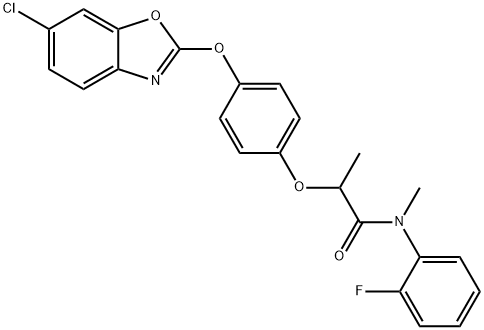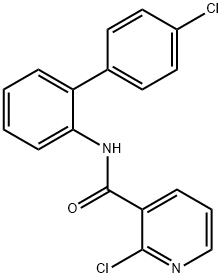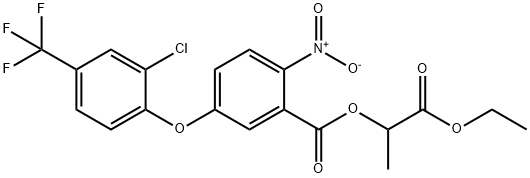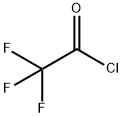Methyl 2-(4-((3-chloro-5-(trifluoromethyl)-2-pyridinyl)oxy)phenoxy)propanoate
- CAS NO.:69806-40-2
- Empirical Formula: C16H13ClF3NO4
- Molecular Weight: 375.73
- MDL number: MFCD01310644
- SAFETY DATA SHEET (SDS)
- Update Date: 2024-12-18 13:37:16

What is Methyl 2-(4-((3-chloro-5-(trifluoromethyl)-2-pyridinyl)oxy)phenoxy)propanoate?
The Uses of Methyl 2-(4-((3-chloro-5-(trifluoromethyl)-2-pyridinyl)oxy)phenoxy)propanoate
Haloxyfop-methyl is a herbicide used for selective post-emergence control of annual and perennial grasses in broadleaf crops.
What are the applications of Application
Haloxyfop-methyl is an herbicide
Definition
ChEBI: Methyl 2-(4-{[3-chloro-5-(trifluoromethyl)pyridin-2-yl]oxy}phenoxy)propanoate is the methyl ester of 2-(4-{[3-chloro-5-(trifluoromethyl)pyridin-2-yl]oxy}phenoxy)propanoic acid. It is a methyl ester, an aromatic ether, an organochlorine compound, an organofluorine compound and a member of pyridines. It is functionally related to a 2-(4-{[3-chloro-5-(trifluoromethyl)pyridin-2-yl]oxy}phenoxy)propanoic acid.
Metabolic pathway
In all soils tested, 14C-haloxyprop methyl is rapidly hydrolyzed to the corresponding haloxyprop acid, providing there is moisture in excess of the wilting point. In air-dried soils, little hydrolysis of haloxypropm ethyl to acid occurs. In moist sterile soils, there is a loss of solvent extractable radioactivity with time. These losses follow first-order kinetics, with half- lives of 27, 38, and 92 days respectively in the sandy loam, heavy clay, and clay loam soil types.
Properties of Methyl 2-(4-((3-chloro-5-(trifluoromethyl)-2-pyridinyl)oxy)phenoxy)propanoate
| Melting point: | 55-57°C |
| Boiling point: | 390.8±42.0 °C(Predicted) |
| Density | 1.4076 (estimate) |
| Flash point: | >100 °C |
| storage temp. | Sealed in dry,Room Temperature |
| solubility | Chloroform (Slightly), Ethyl Acetate (Slightly) |
| pka | -1.52±0.32(Predicted) |
| form | neat |
| BRN | 1509615 |
| CAS DataBase Reference | 69806-40-2 |
| NIST Chemistry Reference | Haloxyfop-methyl(69806-40-2) |
| EPA Substance Registry System | Haloxyfop-methyl (69806-40-2) |
Safety information for Methyl 2-(4-((3-chloro-5-(trifluoromethyl)-2-pyridinyl)oxy)phenoxy)propanoate
| Signal word | Warning |
| Pictogram(s) |
 Exclamation Mark Irritant GHS07 |
| GHS Hazard Statements |
H302:Acute toxicity,oral |
| Precautionary Statement Codes |
P264:Wash hands thoroughly after handling. P264:Wash skin thouroughly after handling. P270:Do not eat, drink or smoke when using this product. P301+P312:IF SWALLOWED: call a POISON CENTER or doctor/physician IF you feel unwell. P501:Dispose of contents/container to..… |
Computed Descriptors for Methyl 2-(4-((3-chloro-5-(trifluoromethyl)-2-pyridinyl)oxy)phenoxy)propanoate
New Products
(S)-3-Aminobutanenitrile hydrochloride 4-Methylphenylacetic acid N-Boc-D-alaninol N-BOC-D/L-ALANINOL Tert-butyl bis(2-chloroethyl)carbamate 3-Morpholino-1-(4-nitrophenyl)-5,6-dihydropyridin- 2(1H)-one Furan-2,5-Dicarboxylic Acid Tropic acid 1-Bromo-3,5-Di-Tert-Butylbenzene S-2-CHLORO PROPIONIC ACID ETHYL ISOCYANOACETATE 2-Bromo-1,3-Bis(Dimethylamino)Trimethinium Hexafluorophosphate 4-IODO BENZOIC ACID 3-NITRO-2-METHYL ANILINE 1-(2,4-DICHLOROPHENYL) ETHANAMINE (2-Hydroxyphenyl)acetonitrile 4-Bromopyrazole 2-(Cyanocyclohexyl)acetic acid 4-methoxy-3,5-dinitropyridine 1-(4-(aminomethyl)benzyl)urea hydrochloride 2-aminopropyl benzoate hydrochloride diethyl 2-(2-((tertbutoxycarbonyl)amino) ethyl)malonate tert-butyl 4- (ureidomethyl)benzylcarbamate Ethyl-2-chloro((4-methoxyphenyl)hydrazono)acetateRelated products of tetrahydrofuran






![ETHYL 2-[4-([3-CHLORO-5-(TRIFLUOROMETHYL)-2-PYRIDINYL]OXY)-2-(PHENYLSULFONYL)PHENOXY]PROPANOATE](https://img.chemicalbook.in/StructureFile/ChemBookStructure2/GIF/CB4744546.gif)

You may like
-
 Haloxyfop-methyl 95% CAS 69806-40-2View Details
Haloxyfop-methyl 95% CAS 69806-40-2View Details
69806-40-2 -
 Haloxyfop-methyl 97.00% CAS 69806-40-2View Details
Haloxyfop-methyl 97.00% CAS 69806-40-2View Details
69806-40-2 -
 Haloxyfop-methyl CAS 69806-40-2View Details
Haloxyfop-methyl CAS 69806-40-2View Details
69806-40-2 -
 Haloxyfop-methyl CAS 69806-40-2View Details
Haloxyfop-methyl CAS 69806-40-2View Details
69806-40-2 -
 1975-50-4 98%View Details
1975-50-4 98%View Details
1975-50-4 -
 2-HYDROXY BENZYL ALCOHOL 98%View Details
2-HYDROXY BENZYL ALCOHOL 98%View Details
90-01-7 -
 14714-50-2 (2-Hydroxyphenyl)acetonitrile 98+View Details
14714-50-2 (2-Hydroxyphenyl)acetonitrile 98+View Details
14714-50-2 -
 118753-70-1 98+View Details
118753-70-1 98+View Details
118753-70-1